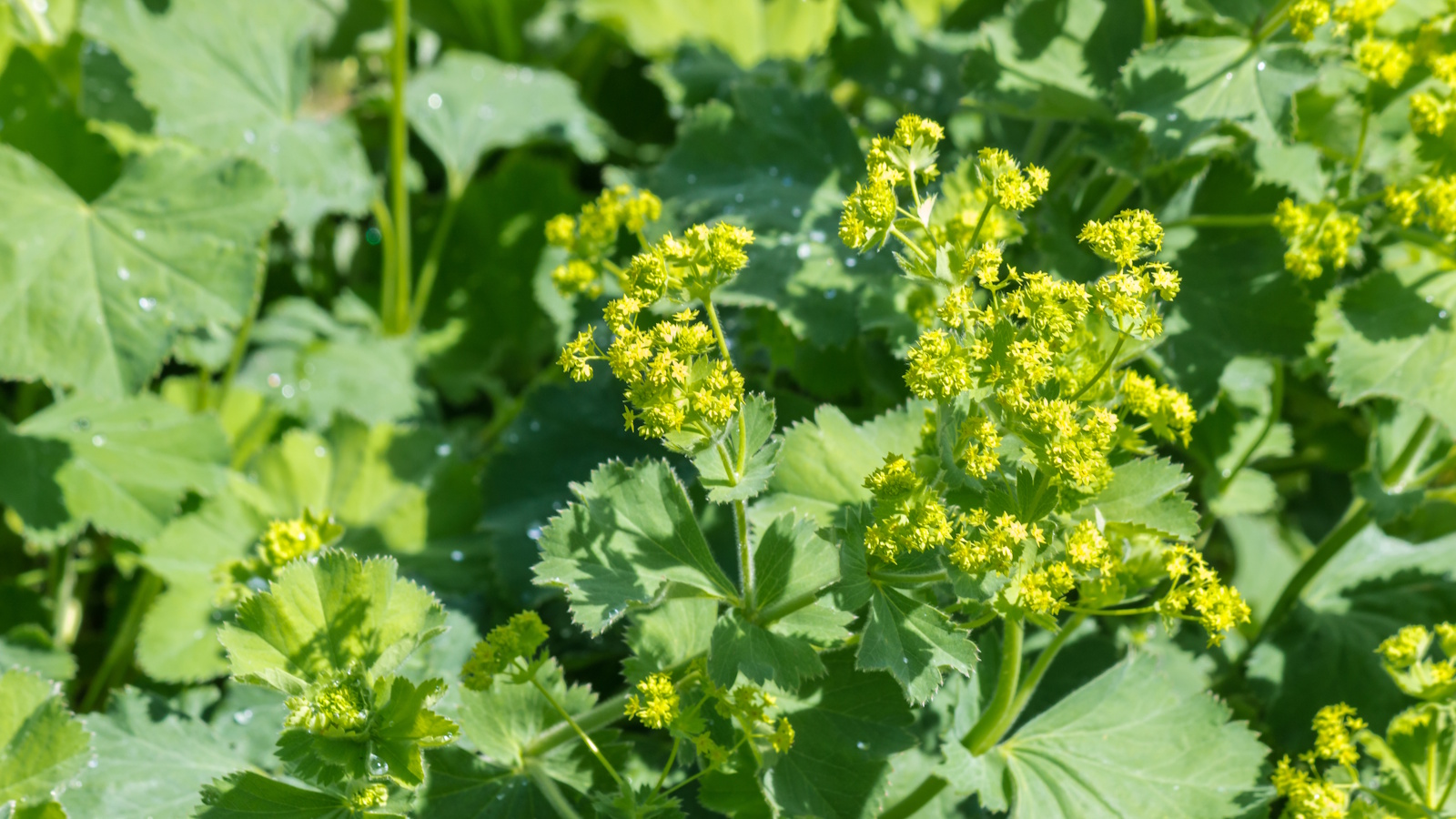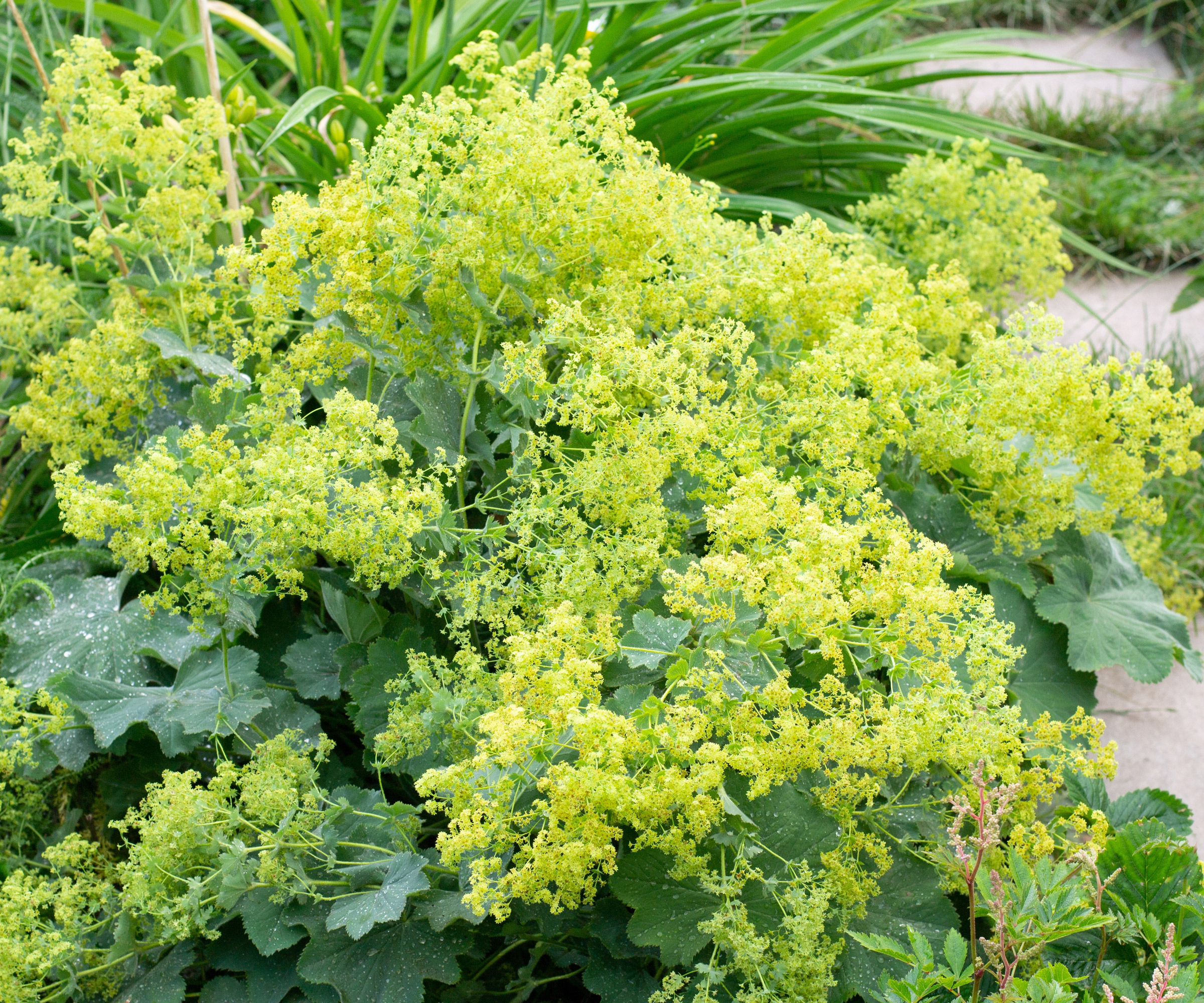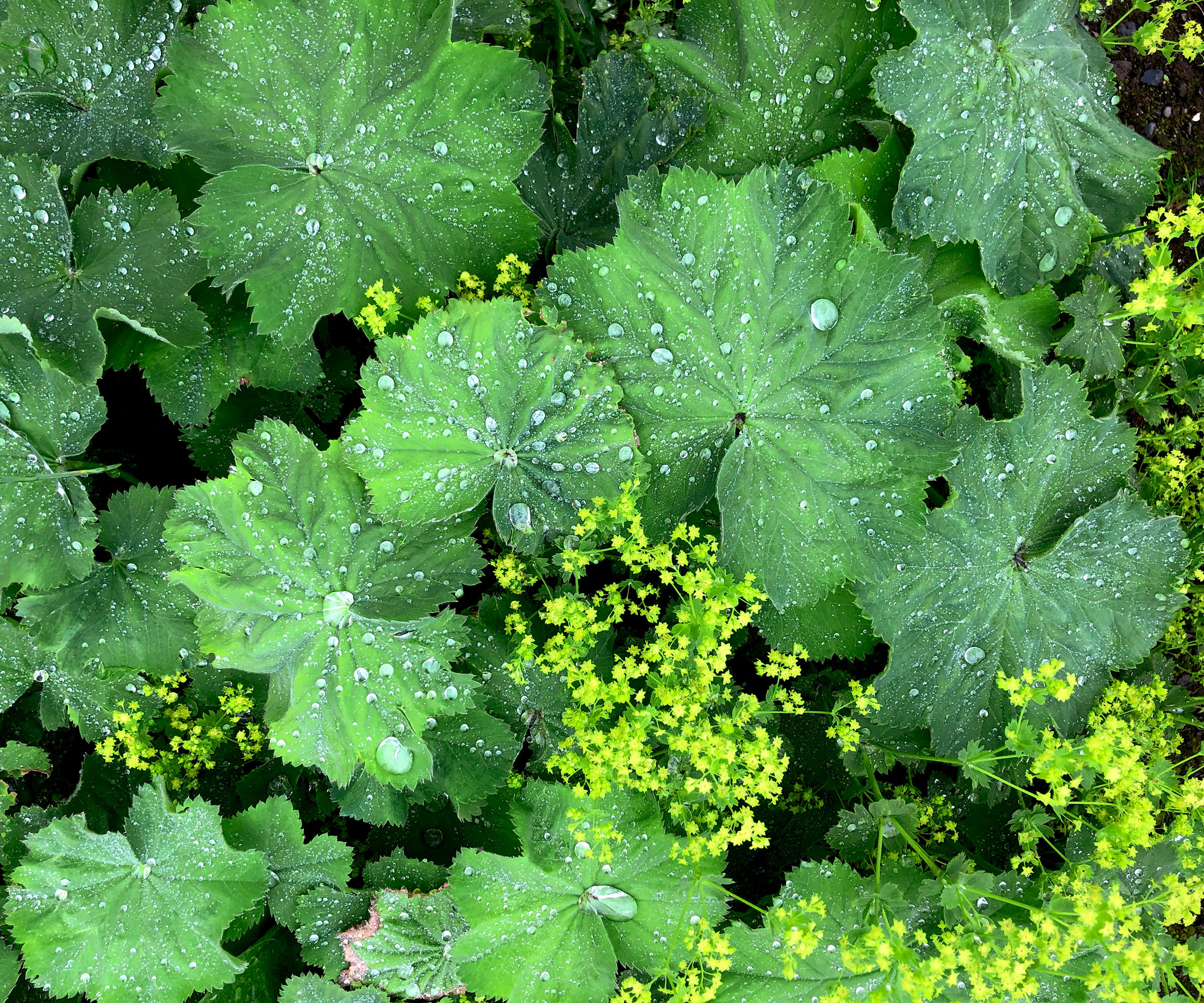How to grow lady's mantle – for a shade-tolerant ground cover plant that will thrive in challenging borders
With lush green foliage and luminous lime flowers, lady's mantle can add color and impact


Lady’s mantle, or Alchemilla mollis, is a popular and resilient perennial that can be grown in various garden settings. From gravel gardens to woodland beds, lady's mantle can thrive alongside other garden favorites, including roses, peonies and foxgloves.
As can be seen in the images here, lady's mantle is valued both for its attractive foliage and vibrant yellow flowers. The fan-shaped leaves are slightly wrinkled and have a tendency to collect raindrops, which can look particularly impressive when the foliage is lush and green in early spring.
So, if you are looking to add one of the best perennials to your borders this year, lady's mantle is the plant for you. Here, two garden experts reveal how to grow lady's mantle, including advice on watering and cutting back.

How to grow lady's mantle
In cool and wet climates, lady's mantle can exhibit aggressive and vigorous growth. For this reason, it is considered an invasive perennial in the Pacific Northwest, including in Oregon and parts of Alaska. If you are unsure, always contact your local government office to ascertain which invasive plants to avoid.
Growing habits of lady's mantle

'Alchemilla mollis, or lady's mantle, is a dense ground cover plant that is an easy-to-grow option for short-on-time gardeners,' says plant expert Katie Sunderlage, who is based in Wisconsin.
'Native to Europe but widely grown in the US, this versatile perennial can quickly fill challenging areas in the yard, including darker spots under large shrubs or established trees.
'Hardy down to zone 3, lady's mantle is generally considered highly adaptable, and will grow in various conditions, including poor soil, rocky terrain and meadows.
Design expertise in your inbox – from inspiring decorating ideas and beautiful celebrity homes to practical gardening advice and shopping round-ups.
'For the best results, plant lady’s mantle in full to part sun,' Katie adds. 'Just remember that the more sun the plant receives, the more flowers it will produce, although some afternoon shade can help to protect the plant during summer.
'This plant offers scallop-edged leaves and chartreuse blooms in mid to late summer, but be warned, these are self-seeding flowers, and once established, they can germinate far and wide, and grow all across your yard.
Live lady's mantle starter plants are available from Amazon.

Operations Manager at Holland Group, managing the customer service department and purchasing. Katie has been in the green industry since 2005 in the Greater Milwaukee area, earning her degree in Horticulture in 2008. She has been able to share her love for plants working in multiple garden centers, in sales positions and most recently in an online retail platform at Holland Group.
Care guide for lady's mantle

- Soil: 'Lady's mantle can be grown in most terrains, although it does best with some drainage, so avoid overly boggy or waterlogged soils.' A slightly acidic pH of 6.0 to 6.5 is also recommended. If you are unsure of your soil pH, use something like this soil test kit, available from Amazon.
- Light: 'This plant will grow from deep shade to full sun,' Katie says. In warmer regions, however, such as US hardiness zone 9, consider a shadier spot to protect the delicate foliage from the harsh afternoon sun. Even in a darker corner, this plant will still produce flowers, just not as many when compared with sunny borders.
- Watering: Consistent watering during the first year after planting is important. For the best results, some deep watering during the first few months will help your perennial to establish. Annual mulching can also help to retain moisture in the soil during spring and summer. Organic mulch is available from Amazon.
- Fertilizing: It is generally not necessary to feed lady's mantle. If you have grown this plant before, you will know that, even in poor soil, it can produce vigorous growth, so no fertilizer is needed.
- Pruning: If you are concerned about this plant spreading, regular deadheading in spring and summer can prevent self-seeding. In terms of pruning, foliage and flowers can be trimmed anytime from October, although if you want to incorporate wildlife garden ideas in your yard, you might consider leaving perennials to stand through winter as food and habitat for insects. They can then be trimmed before new growth emerges, cutting back no later than March.
- Toxicity: Lady's mantle is generally considered non-toxic for either humans or pets, including cats and dogs.
FAQs
Can I propagate lady's mantle by division?
'Lady's mantle can be easily propagated by division,' says Susan Betz, herb expert and Honorary Master Gardener. 'In general, spring is the best time of the year to lift and divide it, when the plant is producing fresh growth. This will help to grow your plant collection for free.'
While there are few pests or problems associated with lady's mantle, it is a dense, vigorous perennial, which can be both a blessing and a curse.
Every few years, you will need to lift and thin clumps to prevent the species from taking over. However, in yards where weeds are a problem, this dense and mounding habit can prove useful for keeping weeds at bay.
For more information, see our guide on ground cover plants to stop weeds.

Susan Betz is an author, garden communicator, lecturer, and conservationist specializing in herbs and native plants. She has been actively growing and using herbs to educate the public about gardening and the natural world for over 35 years. She is an Honorary Master Gardener and a member of the International Herb Association, Garden Communicators, the Ecological Landscape Alliance, and the National Garden Bureau. Susan is a life member of the Herb Society of America.

Thomas is a Content Editor within the Gardens Team at Homes and Gardens. He has worked as a professional gardener for both public spaces and private estates, specializing in productive gardening, growing food and flowers. Trained in Horticulture at the Garden Museum, he has written on gardening and garden history for various publications, including The English Garden, Gardens Illustrated, Hortus, The London Gardener and Bloom. He has co-authored a Lonely Planet travel book, The Tree Atlas, due out in 2024.


